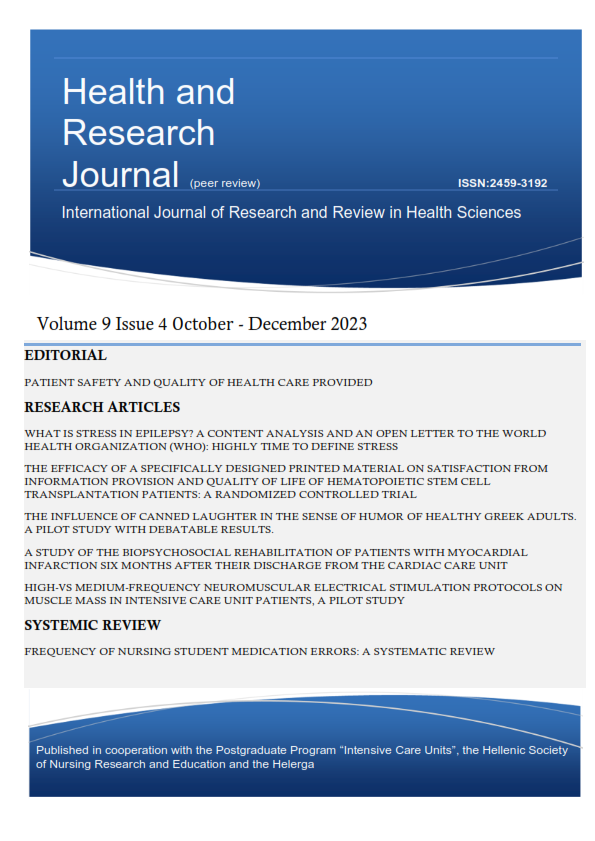A study of the biopsychosocial rehabilitation of patients with myocardial infarction six months after their discharge from the Cardiac Care Unit

Abstract
Background: Acute myocardial infarction is one of the leading causes of death in the developed world. The purpose of this research is to study the biopsychosocial rehabilitation of patients with myocardial infarction six months after their release from the heart attack unit.
Method and Material: The population of the study consisted of patients who had suffered a myocardial infarction and had been hospitalized in the heart attack unit of a University General Hospital six months ago. The study sample was 100 patients. The sampling method is simple randomization.
Results: Problems of anxiety and sadness with a percentage of 50% are in first place, followed by problems of pain and discomfort at a percentage of 24%, problems in performing usual daily activities at a percentage of 22%, mobility problems at a percentage of 16 % and finally the problems of self-care at a rate of 12%. There is a statistically significant difference between genders, with men being more affected with mobility problems (p-value= 0.014) and with performing usual activities (/p-value= 0.003). Patients who are ≤65 years of age appeared to be more affected compared to those >65 years of age in terms of mobility problems (/p-value= 0.009).
Conclusions: Quality of life improves for most patients after myocardial infarction. Whether or not patients have problems on one or more dimensions of the EQ-5D is highly related to the patient's profile. Fewest problems are observed in the self-care dimension and most problems are reported in the anxiety or sadness dimension.
Article Details
- How to Cite
-
Apostolopoulou, E., Tsagri, C., Kipourgos, G., & Tzenalis, A. (2023). A study of the biopsychosocial rehabilitation of patients with myocardial infarction six months after their discharge from the Cardiac Care Unit . Health & Research Journal, 9(4), 205–218. https://doi.org/10.12681/healthresj.34508
- Section
- Original Articles
Copyright notice:
The journal "Health and Research Journal" reserves the rights for copyright of the content of the website and also the copyright of the articles published.
By virtue of their appearance in this journal, the articles are free to be used for non-commercial purposes. However, the articles cannot and must not be used in anyway, published elsewhere or modified without any reference to the author and the first publication of the article.


